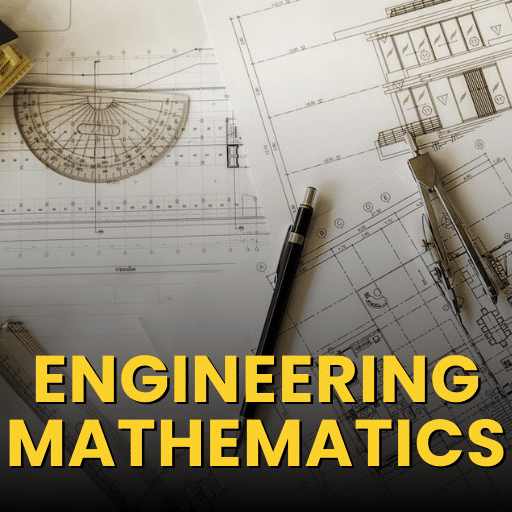Pipes & Cisterns | General Aptitude for GATE - Mechanical Engineering PDF Download
| Table of contents |

|
| Introduction: Pipes & Cisterns |

|
| Basic Concept of Time and Work |

|
| Introduction: Negative Work |

|
| Solved Examples: Time & Work |

|
Introduction: Pipes & Cisterns
- Pipes and Cisterns problems are almost the same as those of Time and Work problems.
- Thus, if a pipe fills a tank in 6 hrs, then the pipe fills 1/6th of the tank in 1 hour.
- The only difference with Pipes and Cisterns problems is that there are outlets as well as inlets.
- Thus, there are agents (the outlets) which perform negative work too.
- The rest of the process is almost similar.

Inlet
- A pipe connected with a tank (or a cistern or a reservoir) is called an inlet, if it fills the tank. The work done by this is taken as Positive work.
Outlet
- A pipe connected with a tank is called an outlet if it empties the tank and the work done by this is taken as the Negative work.
Basic Concept of Time and Work
- The basic concept of Time and Work is similar to that across all arithmetic topics, i.e. the concept of proportionality.
- Efficiency is inversely proportional to the Time taken when the amount of work done is constant.

- This can be used to compare efficiencies and time taken across different groups in Time-Speed-Distance, efficiency is replaced by Speed, i.e. Speed is inversely proportional to Time when the Distance is constant.
- Pipes and Cisterns are just an application of Time and Work. Concept wise, it is one and the same.
- In the above proportionality, Efficiency is replaced by Rate of filling.
The equation, in this case, becomes:
 |
Download the notes
Pipes & Cisterns
|
Download as PDF |
Introduction: Negative Work
- Negative work increases the time in which work is to be completed. This application can be extended to cases involving Pipes and cisterns.
- Suppose there are two pipes in a Cistern. Pipe A is used to fill the Cistern and Pipe B is used to empty the Cistern. Here we say that Pipe B and Pipe A are working against each other. When a leak is developed in the Cistern, the leak forms the component of negative work, which slows down the completion of the task (in this case, the filling of the Cistern).

Solved Examples: Time & Work
Example 1. A Cistern has three pipes A, B, and C. Pipe A can fill a Cistern in 10 hrs, Pipe B can fill a Cistern in 5 hrs while Pipe C can empty the Cistern in 20 hrs. If they are switched on at the same time; in how many hours will the Cistern be filled?
Solution:
- In one hour, Pipe A can fill 100/10 = 10% of the Cistern.
- In one hour, Pipe B can fill 100/5 = 20 % of the Cistern.
- In one hour, Pipe C can empty 100/20 = 5 % of the Cistern.
- If all three are working together, (10 + 20 – 5) = 25% of the Cistern will get filled in one hour, so it will take 4 hrs for the Cistern to fill.
Example 2. A tank can be filled by tap A in 6 hrs and by tap B in 3 hrs. But when they are open simultaneously to fill an empty tank, they take 3 hrs more than their normal Time. A hole is later discovered as the reason for the delay. Find the Time taken by the hole to empty the tank if it is completely filled.
Solution:
- Tap A takes 6 hrs to fill, so in one hour it will fill 16.67 % of the tank.
- Tap B takes 3 hrs to fill, so in one hour it will fill 33.33% of the tank.
- Together they will fill 16.67% + 33.33% = 50 % of the tank.
- They should take 100/50= 2 hrs to fill the tank. But they take 3 hrs more, because of the hole; they totally take 5 hrs to fill, i.e. they fill 20% in an hour.
- This is possible if the hole empties 50-20 = 30% of the tank in an hour.
- So, to completely empty the full tank, the hole will take 100/30 hrs = 3.33 hrs = 3 hrs and 20 mins.
Example 3. Two pipes A and B can fill a tank in 36 hours and 45 hours respectively. If both the pipes are opened simultaneously, how much time will be taken to fill the tank?
Solution:
- Part filled by A alone in 1 hour = 1/36
- Part filled by B alone in 1 hour = 1/45
∴ Part filled by (A + B) in 1 hour =- Hence, both the pipes together will fill the tank in 20 hours.
Example 4. Pipe A can fill a tank in ‘an’ hours. On account of a leak at the bottom of the tank, it takes thrice as long to fill the tank. How long will the leak at the bottom of the tank take to empty a full tank, when pipe A is kept closed?
Solution:
Method 2: Using Numbers (Shortcut)This method involves using variables to represent the rates and solving algebraically, which is the most standard approach.
Pipe A's rate: Pipe A can fill the tank in a hours, so its rate is 1/a of the tank per hour.
Leak's rate: Due to the leak, it takes 3a hours to fill the tank, so the combined rate of filling and leaking is 1/3a of the tank per hour.
The combined rate is the difference between the filling rate and the leak rate:
= 1/3awhere b is the time it takes for the leak to empty the tank, and 1/b is the rate at which the leak empties the tank.
Solving this equation:
So, b = 3a/2 hours.
Thus, the leak will take 3a/2 hours to empty the full tank. This confirms the answer provided in Method 1 is correct.
Method 2: Using Numbers (Shortcut)This method uses a practical approach by assuming a value for a and solving the problem numerically. While it doesn't use algebra, it provides a quicker, more intuitive solution:
Assume a value for a: Let's assume a = 10 hours. This means the pipe takes 10 hours to fill the tank when there is no leak.
With the leak, the tank now takes 30 hours to fill (because it's three times longer). The effective rate of filling the tank is now 1/30 of the tank per hour.
The rate at which the leak is slowing down the filling process can be calculated as:
Without the leak, the filling rate would be 1/10 per hour.
With the leak, the filling rate is 1/30 per hour.
The leak's rate is slowing down the filling by 1/10 - 1/30 = 1/15 per hour.
The time it would take for the leak to completely empty the tank is the reciprocal of the leak's rate:
=15 hoursTherefore, it would take 15 hours for the leak to empty the tank.
This confirms the correctness of the numerical shortcut method as well.
Conclusion:
Method 1 provides an algebraic solution with a general formula, and Method 2 provides a numerical solution based on assumptions, both of which lead to correct answers.
Answer: The time for the leak to empty the full tank is 3a/2 hours (from Method 1) or 15 hours (using the example in Method 2, assuming a = 10).
So, both methods are valid, but Method 1 provides the most direct and generalized solution.
Example 5: Pipe A can fill a tank in 36 hours and pipe B can empty it in 45 hours. If both the pipes are opened simultaneously, how much time will be taken to fill the tank?
Solution.
Given:
Pipe A fills the tank in 36 hours.
Pipe B empties the tank in 45 hours.
Solution:
Rate of Pipe A = 1/36 (fills the tank).
Rate of Pipe B = -1/45 (empties the tank).
Combined rate:
Time to fill the tank:
Time = 1/ Combined rate = 180 hours
Final Answer:
The time taken to fill the tank is 180 hours.
|
194 videos|168 docs|152 tests
|
FAQs on Pipes & Cisterns - General Aptitude for GATE - Mechanical Engineering
| 1. What is the concept of Pipes & Cisterns in time and work problems? |  |
| 2. How can I determine the efficiency of a pipe or cistern in a time and work problem? |  |
| 3. What is negative work in time and work problems? |  |
| 4. Can you provide an example of a time and work problem involving pipes and cisterns? |  |
| 5. What are some key tips to solve time and work problems involving pipes and cisterns efficiently? |  |



































